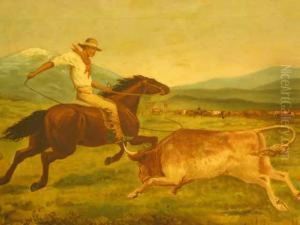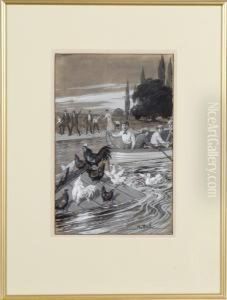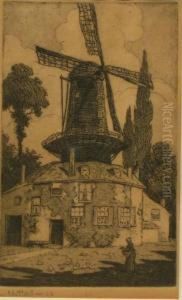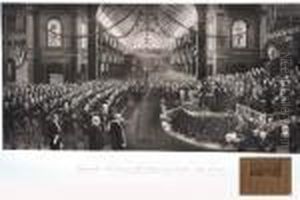Charles Nuttall Paintings
Charles Nuttall was an Australian artist known for his versatility in different mediums including illustration, painting, and etching. Born on July 3, 1872, in Brighton, England, he immigrated to Australia with his family when he was a child. Nuttall developed an early interest in art and pursued his passion through education and practice.
Nuttall's career began in earnest as a commercial artist and illustrator. He worked for various publications, including newspapers and magazines, which was a common entry point for many artists at the turn of the century. His illustrations were widely appreciated for their detail and expressiveness, and he quickly became a sought-after illustrator.
As his career progressed, Nuttall expanded into painting and etching, where his work often depicted Australian landscapes and scenes of daily life. He was particularly noted for his ability to capture the unique qualities of the Australian bush and its atmosphere. Nuttall's paintings were characterized by their vibrant color palette and dynamic compositions, which resonated with both the public and critics.
Despite his successes, Nuttall's life was not without challenges. The economic conditions of the time, especially during the Great Depression, affected the art market and made it difficult for artists to sustain a living through their work alone. Nevertheless, Nuttall continued to produce art that contributed to the cultural landscape of Australia.
Charles Nuttall's contribution to Australian art was significant in that he helped to define a visual language that was distinctly Australian, at a time when the nation was still forging its cultural identity. His works can be found in various galleries and collections throughout Australia. Nuttall's legacy lives on through his art, which continues to be celebrated for its contribution to the Australian art canon.
Charles Nuttall passed away on October 28, 1934, leaving behind a body of work that continues to be studied and appreciated for its historical and artistic value. His dedication to his craft and his ability to adapt to different mediums and styles make him a notable figure in the history of Australian art.



